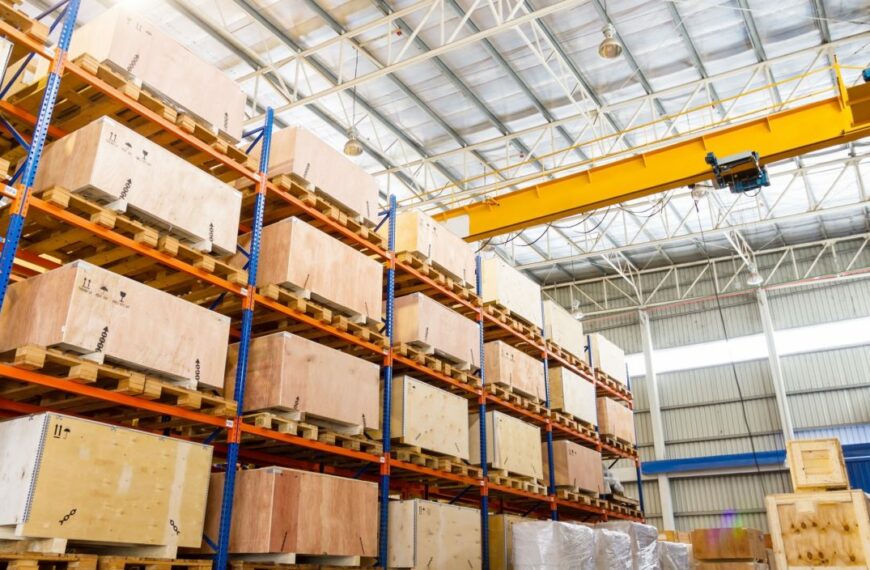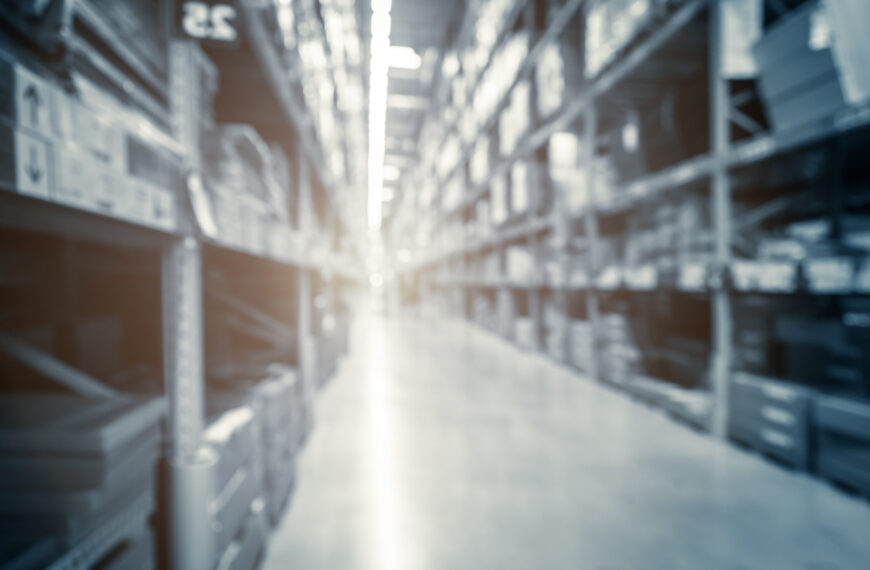
A guide to materials management
What is materials management?
Materials management can be described as a key function of supply chain management, with the primary purpose of effectively controlling and managing the flow of materials in a company to meet operational demands. The overarching goal of materials management relies upon the theory of ensuring that the right materials are provided at the right time, right quantity, right price and right place.
At a high level, materials management encompasses a wide range of activities such as accounting for the number of materials required and held in stock, planning the replenishment of stock, assessing the quality of materials, creating inventory levels for different items and passing relevant information on to procurement and supply chain teams.
Reliable materials management systems embrace all activities related to materials and play a vital role in the success of a finished product or service. Outwith general practices, the function of materials management can also involve the procurement of machinery or equipment, relevant to the production process.
Why is materials management so important?
Effectively managing materials helps to unlock significant cost savings, reduce business risk and streamline operations. Materials management also plays a massive part in the success of other departments or functions, such as maintenance. Maintenance teams often need to call upon materials management teams to provide them with spare parts, allowing them to carry out day-to-day work correctly and efficiently. Moreover, maintenance teams regularly require immediate access to critical parts to ensure the safety of operations and avoid downtime.
To keep operations running smoothly and ensure that costs and processes are continually being optimized, materials specialists need to strike the perfect balance between having the inventory required without overstocking or tying up revenue in materials that aren’t critical to safety or production.

The benefits of effective materials management
Adopting effective materials management practices can bring a range of benefits to a company. These range from improved/increased levels of productivity and cost savings incurred through reduced waste allowing transportation techniques to be optimized, leading to a reduction in their carbon footprint and informed decision-making.

Improve productivity
Arguably, the largest benefit of an effective materials management programme is the ability for businesses to improve productivity. When materials are correctly stocked and in sufficient quantities, material teams do not have to spend unnecessary time waiting for materials to arrive due to stock-outs, or frantically searching the warehouse for the location of lost or incorrectly stored materials.

Reduce costs
Additionally, effective materials management practices can help an organization reduce its inventory costs by eliminating the storage of excess materials and reducing the risk of stock-outs. For instance, using and keeping a CMMS fully updated from a materials perspective can be vital when it comes to saving time and money on materials and spare part management.

Minimize waste
A key benefit of materials management is the ability for businesses to reduce their overall waste by ensuring that materials are used efficiently and functionally. This not only helps to save money but is also beneficial to the wider environment. Sustainable materials management is an approach that is currently being encouraged and promoted across the world by local governments and environmental agencies.

Improved decision-making
Materials management can provide an organization with valuable data and insights regarding its inventory levels, usage patterns and supplier performance. As a result, materials managers are given the knowledge necessary to make more informed decisions and help create plans that can meet the main objectives of the business.

The common challenges associated with materials management and how to overcome them
Materials managers or specialists face the difficult task of maintaining a high level of efficiency in inventory and operations, while looking for ways to reduce costs and improve procedures. Luckily, there are lots of simple tactics and techniques that can be used to overcome the common challenges faced by materials managers and teams.
Preservation of spares
A very common mistake made by companies across the world is to spend significant amounts of money on spares parts which end up sitting in the warehouse and not being used, resulting in waste worth up to millions of dollars.
When items are left on the shelf for years without use, there is a strong possibility that the item may not work when it is needed. Correct preservation and maintenance of spares is very important as incorrect preservation causes operational issues and can led to the need for replacements.
To overcome this issue, there are a two main pieces of advice to follow. Firstly, you want to ensure that all of your equipment is stored correctly alongside being regularly maintained, this may involve creating a preservation maintenance log. In addition, you want to spend time and money training all warehouse personnel to reduce the chance of dangerous and costly mistakes being made.
Inventory budgeting
Understandably, budgeting seems to be at the top of the list when it comes to challenges faced by materials teams. It can be very difficult to try and maximize the budget you have, while trying to maintain optimal inventory levels – ensuring you have all the relevant spare parts at the right time.
To overcome budgeting constraints, Iain Wood, ABL’s Materials Manager recommends focusing on purchasing materials that are a necessity rather than a desire. Time and time again, businesses make the mistake of holding surplus spares of low criticality equipment, taking up valuable storage space and capital. Instead, it is much more cost effective to order these parts as and when they are needed.
Data management
Managing data is one of the core challenges faced in materials management, specifically the standardization and accuracy of data. You want any data collected to be as accurate and timely as possible, as inaccurate data or forecasting can lead to issues surrounding overstocking or stock-outs.
It is extremely common within a CMMS to find multiple variations of descriptions for the same item, spelling errors, varying abbreviations and more, resulting in the potential issue of overstocking or emergency purchasing – which can lead to significant issues for an organization.
This is where data standardization and data cleansing become increasingly important in order to overcome this challenge. Despite seeming relatively mundane, these data-driven tasks can generate huge benefits for an organization such as saving significant amounts of time and money.
Surplus stock
As touched upon, many companies fall into the trap of holding excess spare parts which hinders their ability to unlock significant cost saving opportunities. The common reason for this happening is companies following the recommendations of the manufacturer, instead of taking the time to conduct a technical review of all equipment currently held in stock. It’s important that materials teams keep in mind that the manufacturer doesn’t hold the same level of knowledge of what items you can or can’t fix, or the environment your company operates in.
A simple way to overcome this issue is by conducting a surplus stock review, this involves looking at all the spares and deciding whether to stock the item, sell it or scrap it.
Supply chain complexities
Supply chain complexities can have a large impact on materials management, making it more challenging to plan, coordinate and control the flow of materials. When supply chains are complex, it can be increasingly difficult for materials teams to accurately determine the availability of materials and lead times, causing factors such as delays or shortages. This is when the role of a materials manager becomes extremely important as they should be responsible for proactively monitoring the supply chain to minimize the risk of disruption.

The objectives of materials management
The key objectives of materials management can often be described as ‘The five Rs of materials management’ or ‘The five rights of procurement’, all of which are equally as important as one another in achieving material management excellence.

Right materials
Firstly, you want to ensure that the materials you are selecting are suitable and available for production. This involves identifying the necessary materials needed and checking that every material is of the correct quality, specifications and quantity. By checking that the right materials are available, you reduce the risk of stressful production delays.

Right time
It’s not just the right materials you want to focus on, as timing is a large part of materials management. As a team or materials manager, you want to ensure that the correct materials are available at the right time which involves managing and tracking the movement of materials in the warehouse, eliminating lengthy lead times and improving the efficiency of the delivery process.

Right amount
The third objective of materials management is to guarantee that the appropriate quantity of materials are available. This involves identifying and monitoring the optimal inventory levels and implementing procedures to regulate the movement of materials within the warehouse.
As previously mentioned, holding the optimal amount of materials can help organizations to decrease the risk of stock shortages, eliminate capital being tied up in unnecessary stock and increase efficiency.

Right price
In order to achieve the right price you should aim to purchase raw goods at the best price possible, maximizing cost savings without compromising quality. However, it is common for businesses to try to cut costs by purchasing the cheapest raw material possible, then later finding out that the quality is poor and has caused product recalls or complaints.

Right sources
The final objective of materials management is to check that all the materials are sourced from the right place. This involves picking reliable and approved suppliers then striving to develop strong relationships with each supplier. Sourcing the correct materials can bring huge efficiencies including peace of mind when it comes to quality and reducing the chance of production delays.
4 types of materials management
Materials management covers a vast range of activities including everything from purchasing management and inventory management to materials required planning (MRP) and more! A brief summary of each material management activity can be found below…

Inventory management
Inventory management involves the planning, distribution and storage of materials to ensure optimal inventory levels are maintained. This includes reviewing inventory levels, identifying reorder points and ensuring that inventory is stored correctly.
The overarching goal of inventory management is to minimize the cost associated with carrying and storing inventory while making sure that materials are available when required.

Materials requirement planning (MRP)
Materials requirements planning (MRP) is a computer-based system used for manufacturing production and calculating materials required. It involves three key steps; identifying inventory of the materials on hand, evaluating which additional components are needed and scheduling their production or purchase. This system encourages teams to select materials required, produce accurate estimates of quantities and consider lead times for ordering materials – with the goal of improving productivity and meeting demands.

Warehouse management
Warehouse management focuses on the physical storage and handling of materials in a warehouse or distribution center. This type of materials management involves activities such as receiving orders, storing, packaging, delivering materials and managing the location of materials within the warehouse. The primary objective here is to maximize the space available in a warehouse and minimize the costs of storing inventory and handling materials.

Purchasing management
From identifying reliable suppliers and negotiating contracts to preparing purchase orders and managing the receipt of goods, purchasing management aims to acquire the necessary materials needed to complete production.

What is the role of a materials manager?
Materials managers play a large role in the materials management process, overseeing the procurement, storage and distribution of materials. They may also be referred to as logistics managers or supply chain managers, depending on the industry.
The primary responsibility of materials managers is to plan and control the flow of materials. This typically includes supply chain management related tasks such as sourcing, purchasing and distributing materials. A large part of the role of material managers is to liaise with their colleagues, passing on important information or working closely alongside other managers.
The duties of a materials manager can vary depending on the company and industry, however, the main duties can be summarized as follows:

Production planning
Ensuring materials are available when required to support production planning is a fundamental responsibility of a materials manager. In addition, materials managers are often expected to create effective methods to fulfill operational demands, establishing the priorities for the movement of materials, including what materials are required for production and when they are required – commonly known as forecasting.
Once the priorities have been established, materials managers then work towards managing various workflows to ensure the right amount of materials is available to meet the priorities.

Implementation and control
Similar to other managerial positions, material managers are held accountable for the implementation of their production plans. This involves overseeing production activity and carefully controlling production operations in line with the goals and priorities of the organization. Besides this, material managers may be required to implement purchasing plans, helping to achieve production targets.

Operations management
The role of a materials manager is to ensure the smooth and efficient functioning of operations, which entails collaborating with production and logistics teams, tracking performance metrics, and ensuring the timely delivery of materials.

Facility management
In large-scale companies, it’s crucial that material managers have an awareness and control over what facilities, equipment, plants and labor are available in order to process work and bring together inventory teams. This may include supervising or liaising with other managerial staff at each production facility. By having an understanding of the management and processes involved throughout facilities, materials managers will be more equipped to control the flow of materials.

Future trends in materials management
The field of materials management is ever-evolving, with several trends predicted to shape its future over the coming years – including the introduction of new technology, sustainability and changing consumer demands. Here are some of the potential trends set to impact the future of materials management:
Sustainability
The increasing awareness of the damage that human activity can cause to the environment has led to a growing interest from consumers and businesses in adopting sustainable materials management practices.
Companies are being encouraged to focus their practices towards reducing waste, optimizing the usage of materials and ensuring that materials are sourced, delivered and manufactured in an eco-friendly way.
Digitalization
The use of advanced technology is set to be a key trend throughout the future of materials management, with artificial intelligence (AI), the Internet of Things (IoT) and blockchain predicted to revolutionize the landscape.
Blockchain is particularly important as it uses technology to help improve transparency and security throughout the supply chain, helping materials managers to reduce costs and unnecessary downtime.
Overall, the use of digital solutions brings a range of benefits including the ability to access real-time tracking of inventory levels, automatic stock replenishment and predictive maintenance. Automation is becoming increasingly popular throughout the industry as it saves valuable time, reduces errors and increases safety.
Outsourcing
Following the pandemic, growing pressure was placed on materials and supply chain teams, forcing staff to re-evaluate their supply chain processes and activities. As a result, many companies decided to outsource their supply chain activities in order to provide their customers with consistent and reliable services.
This trend of outsourcing to a third-party supplier is becoming increasingly popular as organizations begin to see the benefits that outsourcing can bring, including reduced costs, greater flexibility and access to specialist knowledge and expertise. Organizations that choose to embrace the change throughout the field are likely to reap the rewards compared to those that do not.
Discover ABL’s inventory and materials services
Frequently asked questions (FAQs)
What is SAP materials management?
SAP materials management is a module of the SAP Enterprise Resource Planning (ERP) system which handles functions such as procurement and inventory management. Materials management in SAP includes functionalities inside the supply chain such as material requirement planning (MRP), invoice verification, material master data management and vendor assessment.
What is the difference between inventory management and materials management?
Despite being related concepts, inventory management and materials management have a few key differences. Inventory management is a more refined concept that focuses on monitoring and controlling inventory levels to ensure there is sufficient stock to meet demand while materials management is a broader subject matter that encompasses all activities related to the management of materials including inventory management, procurement and the supply chain.
What does the term ‘double handling’ refer to in materials management?
One of the key problems faced in materials management is ‘double handling’ which is used to describe the issue of when a material is unnecessarily handled more than required, often leading to increased labor costs, reduced productivity and shipping issues.
Related case studies
Warehouse and Inventory Management Optimisation
Project: To assure complete accuracy of the inventory data within the CMMS Client: Oil and Gas exploration and production company Asset: Onshore and Offshore Storage Warehouse Facilities Project Objective: To…
Unlocking business efficiencies through inventory data enrichment
Project Objective: Enrich, optimise, and validate inventory data Client: Oil and Gas Operator Asset: 2 oil sands facilities Location: North America Software: Effio™ The request ABL’s materials management team were…
Saving $74M over 5 years through inventory data enrichment
Project Objective: Inventory data optimisation Client: International Oil and Gas Company Asset: 27 Onshore and offshore production facilities Software: Effio™ The request To validate, enrich and build equipment Bill of Materials…
Inventory Management Optimisation
Client: Oil and Gas Operator Asset: Onshore Gas Plant Project Objective: To save time, optimise expenditure and reduce equipment outage time through enhancement of inventory management data ABL’s CMMS data…
How ABL can help with your materials management
Our team of materials specialists are here to help you develop and implement an effective materials management programme, tailored to your businesses needs and goals.
At ABL, our specialist services and award-winning software have been designed to improve the visibility and traceability of materials and assets, helping you to maximize production, minimize operational downtime and cut inventory costs.
For example, AssetVoice is our digital automated workflow, and real-time asset tracking software that allows companies to cut costs and maximise productivity.


Find out how Add Energy can support with your materials management practices.
Find out how Add Energy can support with your materials management practices.




